Facial Skin And Body Skin: Is There Any Difference?
Knowing what sets them apart can help you find the right solutions for your skin.

Image: Shutterstock
Have you ever wondered why you can’t wash your face with body wash? Why does the cosmetics industry create products for the face and the body separately? Is there really any difference between facial skin and body skin? Or are they attempting to manipulate you into purchasing more items?

Well, you are not alone!
The thing is, your facial skin is extremely different from the rest of your body’s skin in terms of texture, thickness, and sensitivity. To build a comprehensive skin care regimen, you must fully understand your skin. In this article, we will look at how your facial skin differs from the rest of your body. However, you must first learn all about the skin in detail. Keep reading to find out more!
In This Article
The Anatomy Of Skin

Your skin is comprised of three layers (1):
- The Epidermis: This is the topmost layer of your skin (which you can see). It acts as a protective layer and a waterproof barrier and is also responsible for your skin tone.
- The Dermis: This layer lies just underneath the epidermis. It contains the connective tissues, the sweat glands, and the hair follicles.
- The Hypodermis: This is a subcutaneous tissue made of connective tissues, and it mainly stores fat.
 Fun Fact
Fun FactThe epidermis, dermis, and hypodermis on your face are different from those on the rest of your body. Let’s find out how.
Key Takeaways
- Your skin is made up of three layers: epidermis, dermis, and hypodermis.
- The epidermis contains cells that are unevenly distributed, causing your facial skin to be thinner than the skin on your body.
- The dermis layer of facial skin contains lesser apocrine and eccrine glands and more blood vessels than body skin.
- The hypodermis layer on your face, scalp, armpits, hands, and feet vary in thickness.
How Facial Skin Differs From Body Skin

Let’s proceed layer by layer!
1. Epidermis
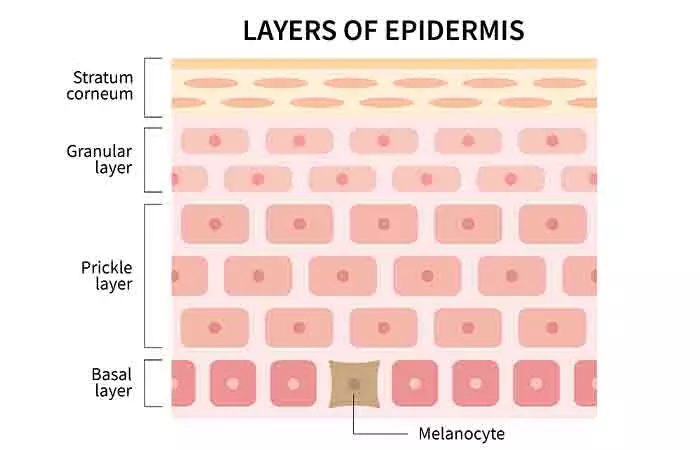
The epidermis of your skin has several sublayers, including stratum basale and stratum corneum (2). These sublayers have different types of cells that are responsible for a variety of functions, such as the protective effects of the epidermis and your skin tone. The cells include keratinocytes, melanocytes, merkel cells, and langerhans (3).
- Keratinocytes: These cells constitute about 90% of the epidermis. They continuously undergo cell division and replacement. The old cells migrate to the topmost layer of the skin and are called corneocytes.
- Melanocytes: These cells give you your skin tone. Melanocytes produce melanin that protects your skin from the UV rays of the sun.
- Merkel Cells: These cells help you detect the sensation of touch.
- Langerhans: These are immune cells that specialize in antigen presentation and protect your body from infections.
These cells are not evenly distributed on your face and body. The epidermis of your face is thinner than the epidermis of your body due to uneven cell distribution. Therefore, there are things you should never put on your face that you can use for your body, such as body lotion, hair spray, etc. Let’s take a look to understand the difference between the epidermis of the face and the body.
Epidermis Of The Face Vs. Epidermis Of The Body
| Skin Cells | Face | Body |
|---|---|---|
| Keratinocytes | Old cells migrate to the upper layer of skin in a week. | Cell migration takes place over 2 weeks. |
| Corneocytes | Less layers of corneocytes (about 4-8) | · Most of the body contains 11-17 layers. · Palms and soles contain 23-71 layers. · The genitals contain 4-8 layers. |
| Melanocytes | · Melanin levels are high. · Contains 15 melanocytes per square millimeter because your face is exposed more to the sun than your body. | · Melanin levels are low (not in areas that are frequently exposed to the sun, such as hands). · Contains 15 melanocytes per square millimeter. |
| Langerhans | The concentration of these cells is unknown. | The concentration of these cells is unknown. |
| Merkel Cells | The concentration of these cells is unknown. | The concentration of these cells is unknown, but they are found in genitals, torso, and limbs. |
2. Dermis
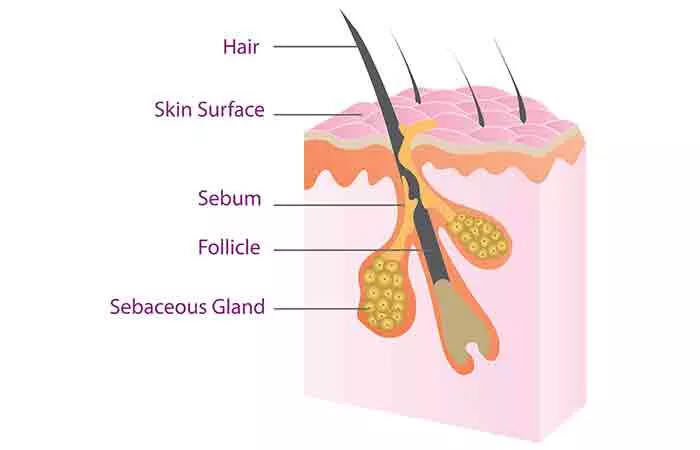
The dermis makes your skin elastic and gives it strength as it contains elastic and fibrous tissues. Apart from that, the dermis also contains:
- Sweat Glands: There are two types of sweat glands in the dermis – the apocrine glands (found in areas where you have more hair, such as armpits and groin) and the eccrine glands (major sweat glands responsible for producing sweat and control body temperature by evaporating) (4).
- Blood Vessels: These provide nutrients to the epidermis as there are no blood vessels in the epidermis (5).
- Sebaceous Glands: These glands produce sebum and are usually attached to the hair follicles in your skin.
- Hair Follicles: These help in enhancing your sensations and regulating your body temperature. Body hair is of two types – vellus hair (soft and fine hair found on infants) and terminal hair (long and coarse hair found on adults).
 Trivia
TriviaDermis Of The Face Vs. Dermis Of The Body
| Components of Dermis | Face | Body |
|---|---|---|
| Sweat Glands | · Apocrine glands – very few · Eccrine glands – Approximately 320 per sq. cm on the cheeks and 360 per sq. cm on the forehead. | · Apocrine glands – found in the areola, armpits, and perineum (the area between your genitals and anus). · Eccrine glands – 620 per sq. cm on the soles, 300 per sq. cm on palms, 65 per sq. cm on the back, and 120 per sq. cm on the thighs. |
| Blood Vessels | More blood vessels | Fewer blood vessels |
| Sebaceous Glands | · Abundant on the scalp and face (about 900 glands per sq. cm) · Smaller. | · Found all over the body, except for the soles, palms, and some parts of the genitals. · The sebaceous glands on your back are large. |
| Hair Follicles | · Before puberty, both men and women have vellus hair. · During puberty, women retain their vellus hair, while it turns to terminal hair in men. | · Before puberty, vellus hair is found all over the body. Women retain it on their chest and back. · During puberty, vellus hair is replaced by terminal hair. Men get terminal hair on the legs, arms, chest, and abdomen. |
3. Hypodermis
The hypodermis is the innermost layer of your skin and a storehouse of fat cells that protect your body from heat and cold.
It also contains adipose tissue (a type of fatty tissue) that your body uses when it faces a caloric deficit (6).
Hypodermis Of The Face Vs. Hypodermis Of The Body

Generally, in females, the hypodermis is the thickest in areas such as buttocks, thighs, and hips. In males, it is the thickest in the thighs and the abdomen. However, when it comes to the face, both men and women have thick hypodermis deposits in their cheeks.
If you touch the skin on your face, scalp, armpits, hands, and feet, you can feel the difference. That is the reason each body part demands specific skin care products and a daily skin care routine.
The skin on your face
- is always exposed and takes on environmental stress, pollution, and the UV rays. Hence, it is sensitive and shows aging signs faster than the rest of your body.
- is susceptible to blemishes, hyperpigmentation, and related skin issues. Compared to the skin on the rest of the body, it needs specific skin care products to address all these issues and promote cell regeneration.
- is delicate, especially the area around your eyes, which is why it needs special attention and gentle care.
The skin on your scalp
- is rich in blood vessels and contains more sebaceous glands than any other part of your body. This is because the sebaceous glands are attached to the hair follicles, and your scalp has the maximum concentration of hair.
- The excess sebaceous glands and the thick hair make your scalp prone to skin issues if you do not take care of it. Just like your face, it also needs gentle care to nourish the hair roots and promote healthy hair.
The skin on your armpits
- is extremely sensitive as it always rubs against each other and does not get much light or air.
- is exposed to skin treatments, such as waxing and shaving, and the chemicals contained in deodorants and antiperspirants.
- is dark, moist, and produces odor due to the metabolization of bacteria.
- needs extra care. You should exfoliate it regularly and keep it clean. Also, ditch deodorants with harsh chemicals and switch to natural deodorants.
The skin on your hands
- works really hard. Your palms and fingers are hard and usually lack a natural moisturizing factor. That’s why you need to moisturize them regularly with moisturization or hydration products.
- is thin and cannot bind moisture properly, making it prone to dehydration.
- is regularly exposed to solvents, surfactants, and chemicals that strip away moisture and make it dry. Therefore, you need to exfoliate it regularly. Use mild products that do not cause moisture loss and maintain the pH level of the skin.
The skin on your feet
- has extra padding and rougher and harder skin compared to the rest of the body. It is mostly exposed to excessive pressure and friction, making it prone to calluses.
- may develop corns because of uncomfortable and tight shoes.
- is susceptible to fungal infections (due to dry and cracked skin). Use softening creams and wash your feet with effective cleansers. Also, don’t forget to get rid of the dead skin cells using a foot buffer.
Exfoliation is a vital step in any skincare routine, irrespective of skin type or location. However, knowing how to exfoliate your skin properly and committing to doing it regularly is crucial to keeping your skin soft and supple. There are basic steps to it that you must know and follow to have good skin anywhere on the body or face.
The skin on your face and body has different requirements. Your face’s epidermis, dermis, and hypodermis differ from those on the rest of your body. It is a common misconception that a product that works in one area will also work in others. The products designed for your body will not work on your face! Since the skin on your face is considerably thinner than the skin on the rest of your body, it requires a gentler skin care routine. It would be ideal if you could use a “one-size-fits-all” remedy for all of your skin concerns, but these are difficult to come by. Now you know why!
Frequently Asked Questions
Is the skin on your neck the same as on your face?
No. The skin on your neck is thinner than the skin on your face. It has less collagen and is more prone to sun damage than the facial skin.
Is underarm skin thin?
Yes. The underarm skin is relatively thin and sensitive.
Is scalp skin the same as face skin?
No. The scalp skin has more sebaceous glands, hair follicles, and blood vessels than the facial skin.
Can I use body lotion on my face?
It’s not recommended to use body lotion on your face, as it may be too thick or contain ingredients that can clog pores or irritate sensitive skin. Face lotions are lightweight and specially formulated for delicate facial skin.
What should I use for sensitive facial skin?
For sensitive facial skin, choose products labeled as hypoallergenic, fragrance-free, and gentle. Look for soothing ingredients like aloe vera, chamomile, or calendula, and avoid harsh chemicals or alcohol-based products.
Delve deeper into the science of human skin. Watch this video to discover the amazing functions of our largest organ and how it helps keep us healthy.
References
Articles on StyleCraze are backed by verified information from peer-reviewed and academic research papers, reputed organizations, research institutions, and medical associations to ensure accuracy and relevance. Read our editorial policy to learn more.
- Anatomy Skin (Integument) Epidermis
https://www.ncbi.nlm.nih.gov/books/NBK470464/ - Epidermal Physiology
https://www.researchgate.net/publication/316575958_Epidermal_Physiology - Histology Skin
https://www.ncbi.nlm.nih.gov/books/NBK537325/ - Physiology of sweat gland function: The roles of sweating and sweat composition in human health
https://www.researchgate.net/publication/333799853_Physiology_of_sweat_gland_function_The_roles_of_sweating_and_sweat_composition_in_human_health - Dermis
https://www.sciencedirect.com/topics/immunology-and-microbiology/dermis - Physiology Integument
https://www.ncbi.nlm.nih.gov/books/NBK554386/
Read full bio of Dr. Vindhya L Veerula
Read full bio of Ramona Sinha
Read full bio of Eshna Das
Read full bio of Shiboli Chakraborti







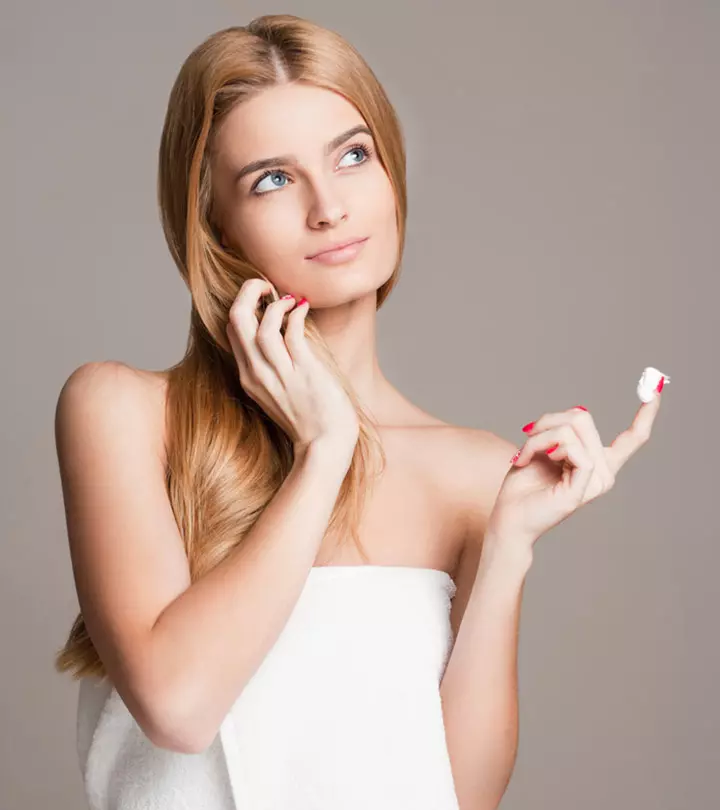


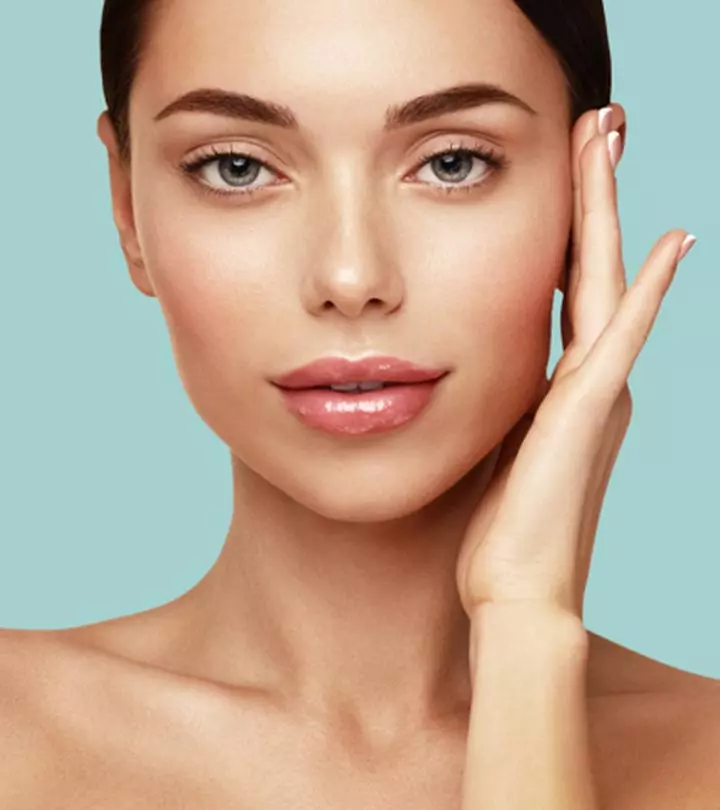

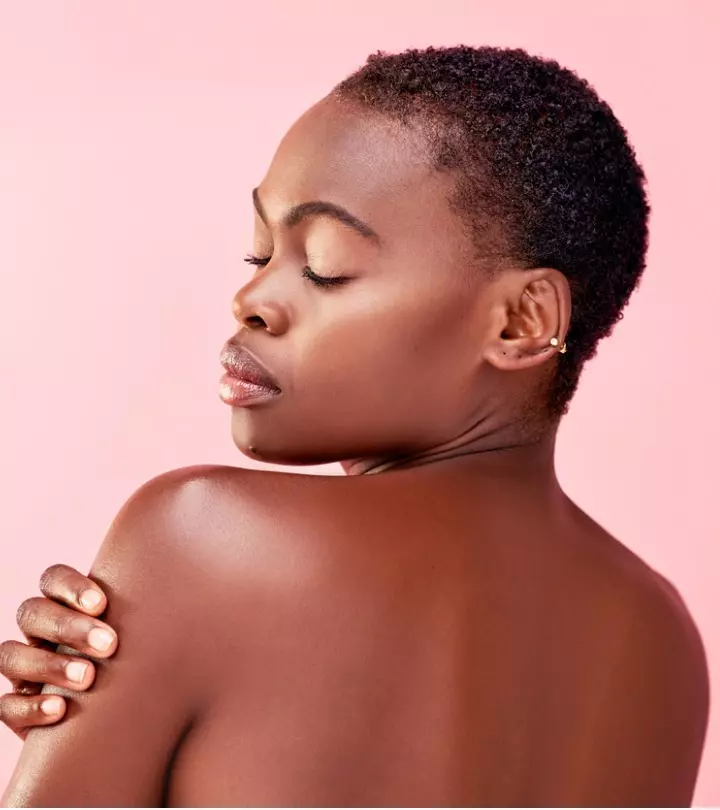








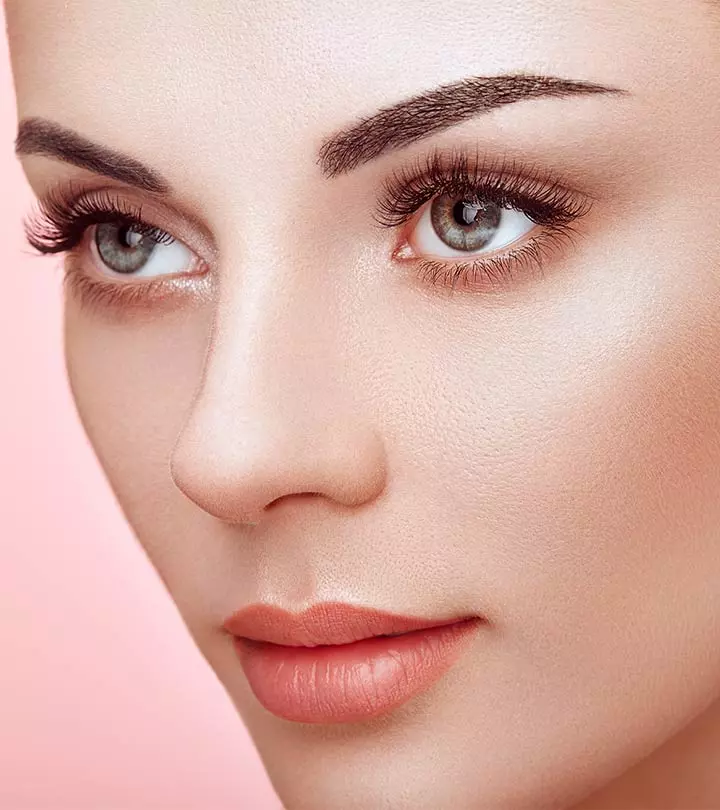
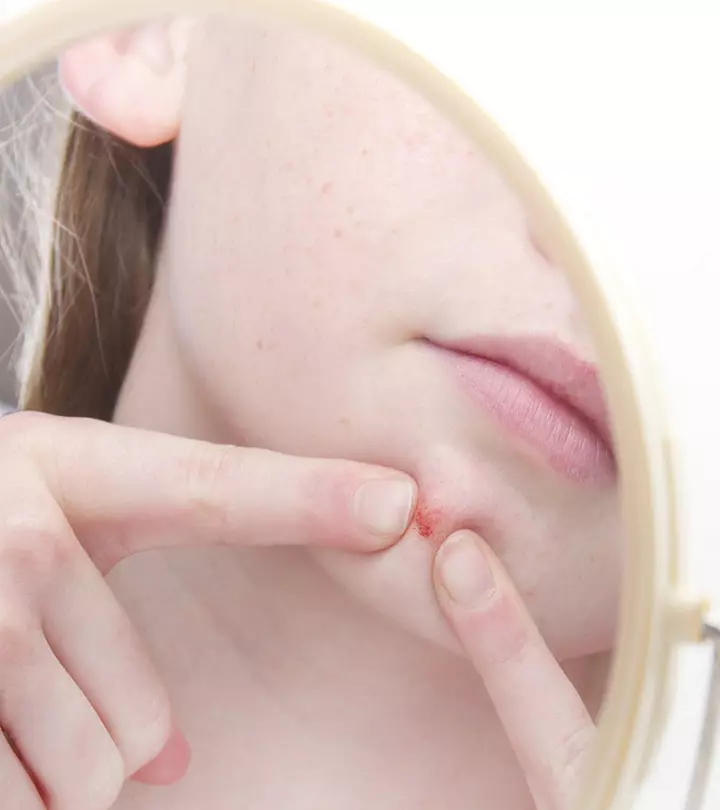



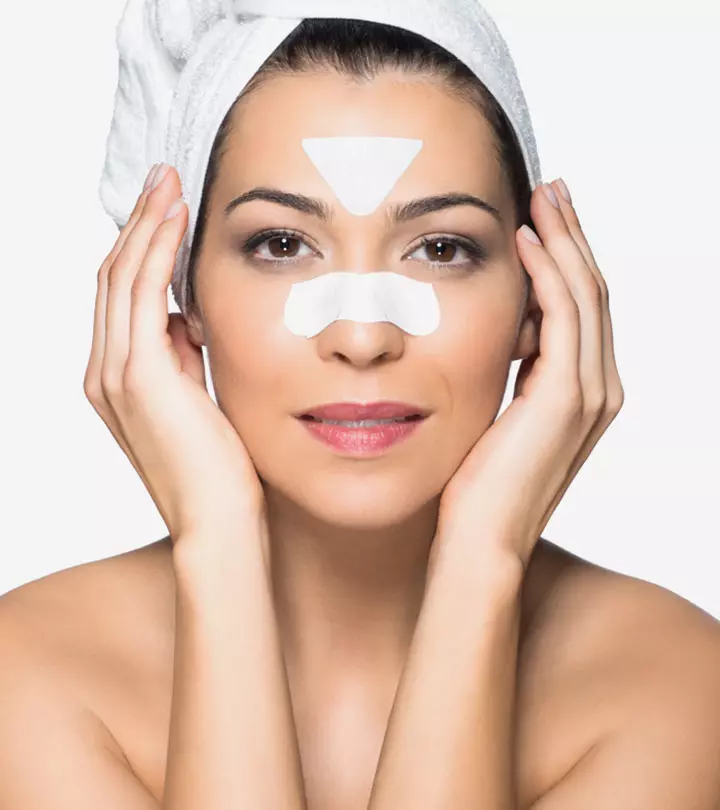

Community Experiences
Join the conversation and become a part of our empowering community! Share your stories, experiences, and insights to connect with other beauty, lifestyle, and health enthusiasts.